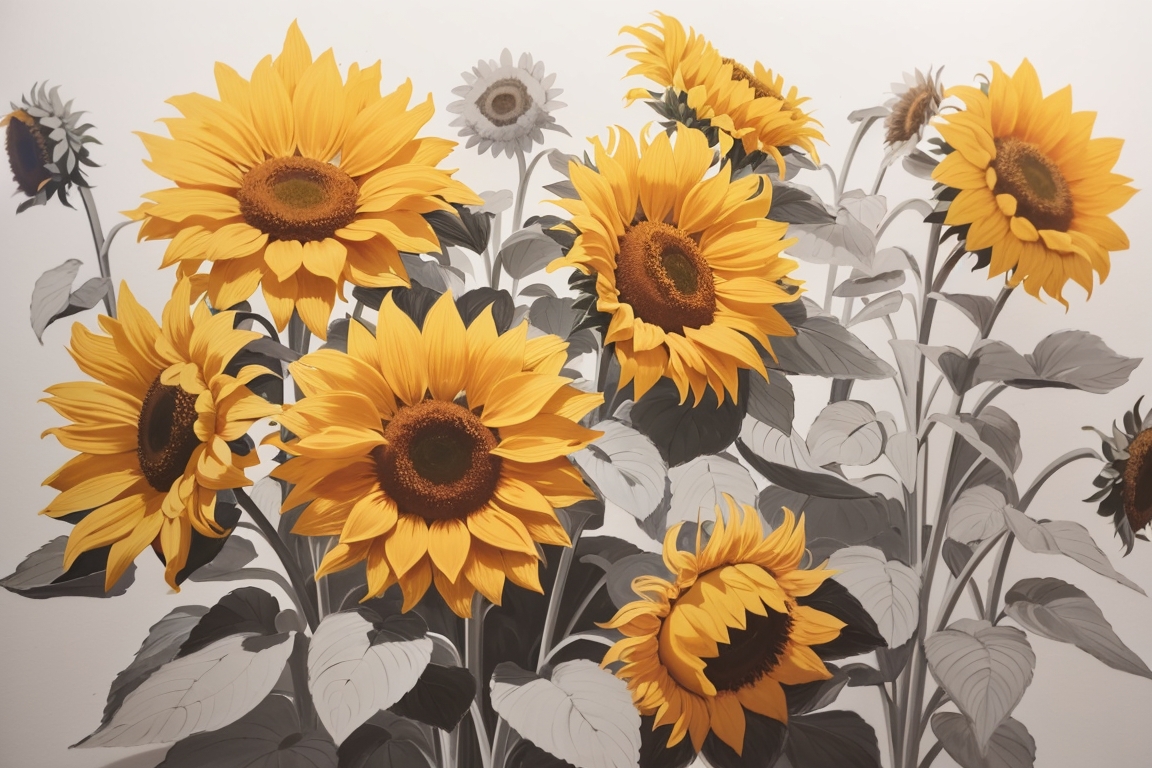
Inspiring Pencil Drawing Ideas for Artistic Minds
Unlock your creative potential with our inspiring pencil drawing ideas. This guide is perfect for both seasoned artists and beginners. It will spark your imagination and help you express your unique artistic side.
We offer a wide range of pencil drawing ideas. From captivating portraits to stunning landscapes, and from intricate still lifes to abstract compositions. Each idea is designed to challenge and inspire you. Discover the joy of capturing your subjects’ essence with a simple yet powerful medium.
Pencil sketching offers a tranquil way to bring your visions to life. Every stroke and shaded nuance adds depth to your art. Embrace the meditative process of pencil art. It helps you connect deeply with your creative self.
Key Takeaways
- Discover a wide range of inspiring pencil drawing ideas to fuel your creativity
- Explore the versatility of pencils and learn essential techniques to elevate your skills
- Unleash your artistic expression through pencil sketching, from realism to abstract compositions
- Capture the beauty of nature, portraiture, landscapes, and still life through pencil drawing
- Embark on a rewarding journey of self-discovery and artistic growth with pencil drawing
Unleash Your Creativity with Pencil Drawing
Pencil drawing lets you express your creativity in many ways. It’s a fun way to show off your artistic side. You can do quick sketches or detailed work, using different techniques and applications to match your style.
Discover the Joy of Artistic Expression
Pencil drawing is rewarding and connects your thoughts and feelings to your art. It lets you capture scenes or explore abstract ideas. This process can change you, letting you share your inner world with others.
Exploring the Versatility of Pencils
Pencils are great for drawing, offering many pencil art techniques. You can do shading or line work, making everything from realistic drawings to abstract art. They bring many pencil drawing benefits to your art.
“The pencil is one of the most essential tools for an artist. It is the foundation upon which all other media are built.”
Mastering the Basics: Essential Pencil Drawing Techniques
Before diving into pencil drawing, it’s key to learn the basics. Knowing pencil drawing skills well lets you bring your ideas to life with ease. This foundation is crucial for your artistic growth.
Shading is a key technique in pencil drawing. It involves using methods like cross-hatching, stippling, and blending. These techniques help add depth, texture, and volume to your drawings. Getting good at pencil shading lets you show different values and create amazing visual effects.
Hatching is another important technique. It uses parallel lines to create shadows and define shapes. Trying out different hatching patterns can make your drawings more unique and realistic.
Blending is vital for smoothly moving between tones and creating gradients. Learning to blend pencil marks well gives your drawings a professional look. It adds depth and dimension to your artwork.
Starting as a pencil artist means mastering the basics first. Spend time practicing these key pencil drawing techniques. This will help you unlock your full creative potential.
Pencil Drawing Ideas for Beginners
If you’re new to pencil drawing, start with simple shapes and forms. This will help you build confidence and skills. As you get better, try drawing nature, like landscapes and still life. These ideas will improve your ability to observe and boost your creativity.
Starting with Simple Shapes and Forms
Begin by mastering the basics of pencil drawing. Practice drawing shapes like circles, squares, and triangles. Use shading to add depth to your drawings. Then, move to more complex forms like cubes, cylinders, and spheres to improve your skills.
Capturing Nature’s Beauty
Once you’re comfortable with simple shapes, try drawing nature. Start with leaves, flowers, or tree branches. Pay attention to details and textures. Then, move on to drawing landscapes, focusing on perspective and light and shadow.
| Beginner Pencil Drawing Ideas | Intermediate Pencil Drawing Ideas | Advanced Pencil Drawing Ideas |
|---|---|---|
|
|
|
Pencil drawing is a journey of exploration and growth. Start with simple shapes and forms, then move to nature. This will help you develop the skills and confidence for more advanced drawings. Enjoy the process, be patient, and have fun expressing yourself artistically.
“The essence of drawing is the line, just as the essence of sculpture is the solid form. In drawing, the sculptor works on the plane surface.”
Pencil Drawing Ideas for Intermediate Artists
As you move forward in your pencil drawing journey, it’s time to try new techniques. These will add depth and dimension to your work. Use different textures and shading methods to make your drawings come alive. This will show off your growing pencil art skills development.
Exploring Texture and Shading
Mastering texture and shading is key to great intermediate pencil drawing ideas. Try various pencil strokes like hatching, cross-hatching, and stippling for different textures. Use pencils from soft 6B to hard 2H to get a range of shading techniques.
Practice drawing realistic fabrics, metals, and other materials by observing their textures closely. Focus on how light and shadow work together. Use shading to add depth and dimension to your texture drawing.
| Texture Technique | Pencil Grade | Effect |
|---|---|---|
| Hatching | 2H-6B | Creates linear textures and patterns |
| Cross-hatching | 2H-6B | Adds depth and volume to surfaces |
| Stippling | 2H-6B | Produces a granular, dotted effect |
Remember, getting good at shading techniques takes time and practice. Don’t be afraid to try new things. With patience and hard work, you’ll have a bunch of intermediate pencil drawing ideas to show off your skills.
Pencil Drawing Ideas for Advanced Artists
For seasoned pencil artists, the journey of artistic exploration is endless. As you improve, you might want to try new things. This section aims to inspire you to take your pencil drawing to the next level. It will show you new ways to be creative and push your artistic limits.
Pushing the Boundaries of Realism
Realistic pencil drawings show off an artist’s detailed work and sharp eye. But the real skill is bringing life to the subject. Try adding detailed textures, playing with light and shadow, and aim to make drawings that look almost real.
Experimenting with Abstract Compositions
For some, realism is the goal. But abstract pencil art offers a chance to be free. Use shapes, lines, and shades to express feelings, set a mood, or make the viewer think differently. Dive into creative exploration and pencil art experimentation, letting your imagination run wild without worrying about reality.
“The true essence of art lies not in mimicking the world, but in transforming it through the lens of one’s unique vision.”
Whether you focus on realistic pencil drawings or abstract pencil art, the main thing is to be adventurous and keep growing. Take on new challenges, learn new techniques, and let your advanced pencil drawing ideas lead you on an artistic journey.
Finding Inspiration: Sources for Pencil Drawing Ideas
Looking for new inspiration is crucial for artists. Check out everything from photography to nature, still life, and architecture. These sources can spark your creativity and bring new ideas for pencil drawing.
Start by diving into nature’s beauty. Look at the details of leaves, flowers, and landscapes. Use these to spark your sketches. Try drawing a peaceful garden or a mountain range with your pencil.
Explore still life art with everyday objects. Set up a scene with things like glassware or vintage items. Use your pencil to bring them to life. Play with light and shadow to add depth to your drawings.
Look around you for inspiration, including buildings and structures. Notice the patterns, shapes, and silhouettes of buildings and bridges. Turn these into interesting pencil drawings. Your art can reflect the world around you.
Remember, staying inspired means keeping an open mind. By exploring different creative sources, you’ll find many pencil drawing ideas. This can make your art more exciting.
“The best way to get inspiration is to go for a long walk.”
– Arthur Conan Doyle
Pencil Drawing Ideas for Portraiture
Pencil drawing is a powerful way to capture a person’s essence. Artists can use pencils to show emotion and character. Whether drawing a family member, friend, or famous person, pencil portrait drawing is both challenging and rewarding.
Capturing Emotion and Character
To make pencil portraits stand out, focus on your subject’s expression. Notice how light and shadow change their features. Use techniques like cross-hatching and shading to show their emotions.
Portrait sketching lets you connect deeply with your subject. By studying their face and personality, you can make your pencil art portraiture come alive. This creates a piece that touches the viewer.
“Drawing is not what one sees, but what one can make others see.” – Edgar Degas
As you improve your character study skills, you’ll see the pencil’s versatility. It can be used for realistic or abstract pencil drawing ideas in portraiture. The possibilities are endless.
Pencil Drawing Ideas for Landscapes
The world around us is full of inspiration for pencil drawing fans. From rolling hills and lush forests to cityscapes and amazing buildings, pencils can bring our surroundings to life. They let us capture the beauty of nature and the hustle of cities in great detail.
Start with pencil landscape drawing by looking at nature’s textures and patterns. Sketch a peaceful lakeside or a tall mountain range. Add life to a dense forest or a flower’s delicate petals.
Then, head into the city and let your pencil explore. Draw the busy streets, big landmarks, and how light and shadow play in the city. Try making pencil art landscapes that mix nature and city, creating something beautiful and interesting.
| Pencil Drawing Idea | Skill Level | Recommended Techniques |
|---|---|---|
| Pastoral Landscape | Beginner | Basic shapes, shading, textural detail |
| Cityscape with Skyscrapers | Intermediate | Perspective, architectural elements, contrast |
| Misty Forest Scene | Advanced | Atmospheric perspective, layered foliage, soft edges |
“The best thing about drawing is that it forces you to really look at the world around you. It’s a meditation on form, line, and light.”
Pencil Drawing Ideas for Still Life
Explore the world of still life drawing with pencils. Turn everyday objects into something special. Show off their shape, texture, and unique look with pencils.
Bringing Everyday Objects to Life
Pencil drawing is great for showing the beauty in everyday things. By focusing on the small details, you can make ordinary items look amazing. You can draw simple scenes or complex ones with many objects.
Start by drawing things you see every day, like a vase, a cup, or a piece of fruit. Notice how light and shadow play on them, their textures, and the curves that shape them. As you get better, try drawing more complex scenes that test your skills.
“The true work of art is but a shadow of the divine perfection.”
– Michelangelo
With practice and skill in pencil drawing, you can make even the most common objects look fascinating. Your drawings will grab the viewer’s attention and inspire them to create their own art.
Pencil Drawing Ideas for Architecture and Urban Scenes
Use pencil drawing to capture the beauty of buildings and cityscapes. Learn techniques to show the details, textures, and feelings of the places we live and visit. Turn your drawings into art that tells a story.
Architecture and cityscapes are full of inspiration for pencil artists. Whether you’re just starting or have been drawing for years, learning pencil architectural drawing and urban sketching can unlock new creativity.
Improve your cityscape drawing skills by focusing on shapes, shadows, and perspectives. Try different pencil methods like cross-hatching and blending. This will help you capture the essence of pencil art urban scenes and building illustration.
Embrace the unexpected in architectural and urban pencil drawing. This art form turns everyday scenes into something special. It brings life to the buildings and places that make up our cities.
“The artist’s world is limitless. It can be found anywhere, far from where he lives or a few feet away. It is always on his doorstep.” – Paul Strand
- Observe the details: Pay close attention to the intricate features of buildings, such as windows, doors, and architectural elements.
- Experiment with perspective: Practice capturing the depth and scale of urban structures by experimenting with different vanishing points and perspective techniques.
- Capture the mood: Use shading and contrast to create a sense of atmosphere and mood, whether it’s a bustling city street or a serene urban oasis.
- Embrace the unexpected: Look for unique angles, textures, and compositions that can add visual interest to your pencil art urban scenes.
Keep exploring architectural and urban pencil drawing. Let your creativity flow. With practice and attention to detail, you can turn the world around you into art that inspires and delights.
Conclusion: Embracing the Joy of Pencil Drawing
The pencil drawing journey you’ve started has opened up a world full of artistic possibilities. You’ve learned how pencil drawing can boost your creativity and help you grow as an artist. Keep exploring the endless potential that pencil art offers.
If you’re just starting or if you’re already skilled, pencil drawing can help you discover yourself and express your art. Dive into the beauty of nature, the depth of portraits, the energy of city scenes, and the quiet beauty of everyday objects.
Keep the pencil by your side as you continue this exciting artistic journey. Embrace the challenges, celebrate your achievements, and let drawing bring you deep personal and creative joy. The rewards of this path are waiting for those ready to dive into the joy of pencil drawing.
FAQ
What are the benefits of pencil drawing?
Pencil drawing lets you express your creativity and explore a versatile medium. It’s a great way to develop basic drawing skills. Both beginners and experienced artists can enjoy this rewarding form of art.
How can I find inspiration for my pencil drawings?
Look for inspiration in photography, nature, still life, architecture, and the world around you. These sources can spark your imagination and fuel your creativity.
What are the essential pencil drawing techniques I should master?
Mastering techniques like shading, hatching, blending, and rendering is key. These skills form a strong foundation for more complex pencil art. They help you create detailed and expressive pieces.
Where can I find ideas for beginner-friendly pencil drawings?
Start with simple shapes and forms, like landscapes or still life. As you get better, move on to more complex subjects. This approach helps you grow your skills gradually.
How can I incorporate texture and shading in my pencil drawings?
Try different textures and shading techniques to add depth to your drawings. Use cross-hatching, stippling, and gradient shading for various textures. These methods make your artwork more engaging.
What are some advanced pencil drawing ideas to explore?
Advanced artists can try realistic portraits to capture emotions and characters. Experiment with abstract compositions and realism challenges. These techniques help you show off your skills and push the medium’s limits.
How can I capture the essence of architectural and urban scenes through pencil drawing?
Pencil drawing is perfect for capturing architectural details and urban scenes. Focus on accurate structures, textures, and moods. This way, you can create stunning art that highlights the beauty of the built environment.







